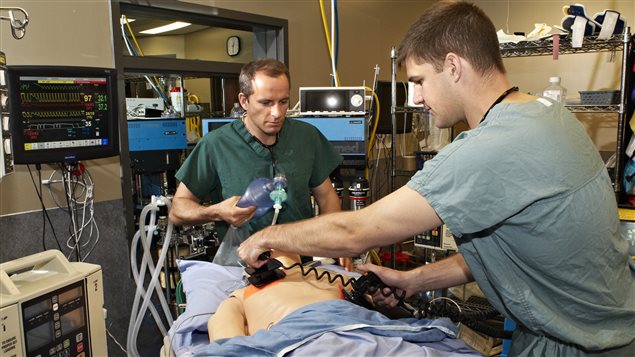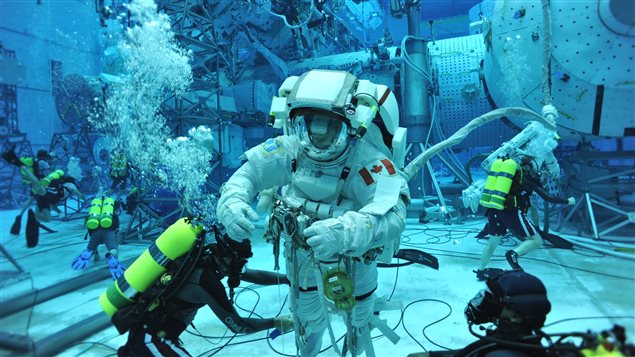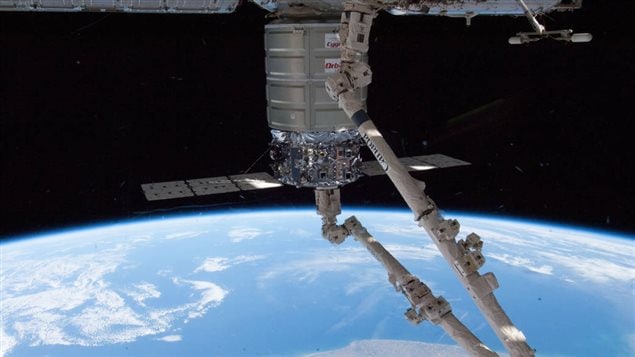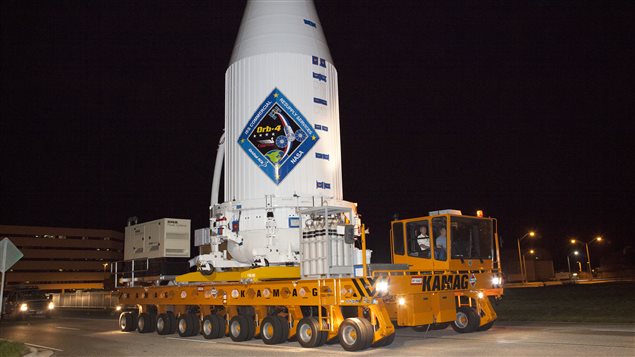When the Orbital Sciences Cygnus resupply craft sets off from Cape Canaveral on its way to the International Space Station shortly before 6 p.m. Thursday, it will carry in its cargo two Canadian science experiments.
And Canadian astronaut David Saint-Jacques will act as chief CAPCOM – Capsule Communicator – for the launch.
“I’m kind of the astronaut responsible for that mission on the ground, there is always someone in the office here who’s responsible for each launch,” said Saint-Jacques, speaking to RCI from the Mission Control Centre in Houston, Texas.
“That means that I’ve been following all the activities surrounding it, preparations leading to it, following the training of the astronauts on board who will have to grab this spacecraft.”
(click to listen to the full interview with astronaut David Saint-Jacques)
ListenPerfect guinea pigs

Saint-Jacques, who on top of his Ph.D. in Astrophysics from Cambridge University, is also a medical doctor, said the two Canadian experiments are of particular interest for him.
“The space station is a big laboratory and some of the experiments are more fundamental science experiments like in physics or material sciences, but a lot of the experiments are on the astronauts themselves,” said Saint-Jacques. “We’re like guinea pigs for medical experiments to better understand the effects of living in space on astronauts.”
These experiments are not only useful for future long space exploration flights to planets like Mars, but they are also very useful to study diseases that happen on Earth, said Saint-Jacques.
“When you stay in space for a long time, a lot of things happen to your body that are not good and that resemble real disease that plague everybody here on Earth,” Saint-Jacques said. “But these diseases appear on young, healthy people with no other medical issues and are very easy to study when you study them on astronauts.”

Canada has put a lot of energy into medical experiments in space, said Saint-Jacques.
“Most of our experiments are medical experiments of that nature so are these two,” he said.
The first experiment, called MARROW, is looking at the effect of living in space for a long time on anaemia. Microgravity in space, like prolonged rest on Earth, has negative effects on the bone marrow and the blood cells and their ability to carry oxygen around the body, said Saint-Jacques.
“We all know someone who’s been sick on Earth, like bedridden for a long time, had a bad accident and became anaemic, it’s pretty common actually,” said Saint-Jacques. “This experiment allows us to study this process of anaemia from the impoverishing of the bone marrow on healthy astronauts with no other disease so that should be a very interesting experiment to see the result of.”
The second experiment, called Vascular Echo, looks at what happens to one’s blood vessels, particularly arteries, in space, said Saint-Jacques.
“I think these are two very smart experiments, very well designed that could have big impacts on the general medicine here on Earth,” said Saint-Jacques.
Canadian technology in space

Cargo space crafts are not “smart” enough to dock themselves with the space station, so astronauts on board have to use the Canadian robotic arm to go and grab them like with a lasso, Saint-Jacques said.
There is another piece of Canadian technology the ISS space crew will use after Cygnus docks with the station. Cygnus will bring in its cavernous belly Kaber, a microsatellite deployer, that the Canadian-made robot Dextre will use to launch small satellites from the space station.
“Dextre is like the super-smart next generation robot,” said Saint-Jacques. “We have our good-old trusty Canadarm up there that was used to build the space station. Dextre is something we plug at the end of it, it’s like the smart hand, it’s got many hands, it’s like a little octopus that is very agile and can do more fine work.”
The next Canadian mission to the ISS is slated for 2018, but there are no guarantees that he’ll be chosen, said Saint-Jacques.
“We’re a bit like athletes who would love to go to the Olympics, but you don’t get to decide that, someone else decides who goes,” said Saint-Jacques. “That’s our life. My job is to get ready and I hope when the day comes I’ll be ready.”







For reasons beyond our control, and for an undetermined period of time, our comment section is now closed. However, our social networks remain open to your contributions.